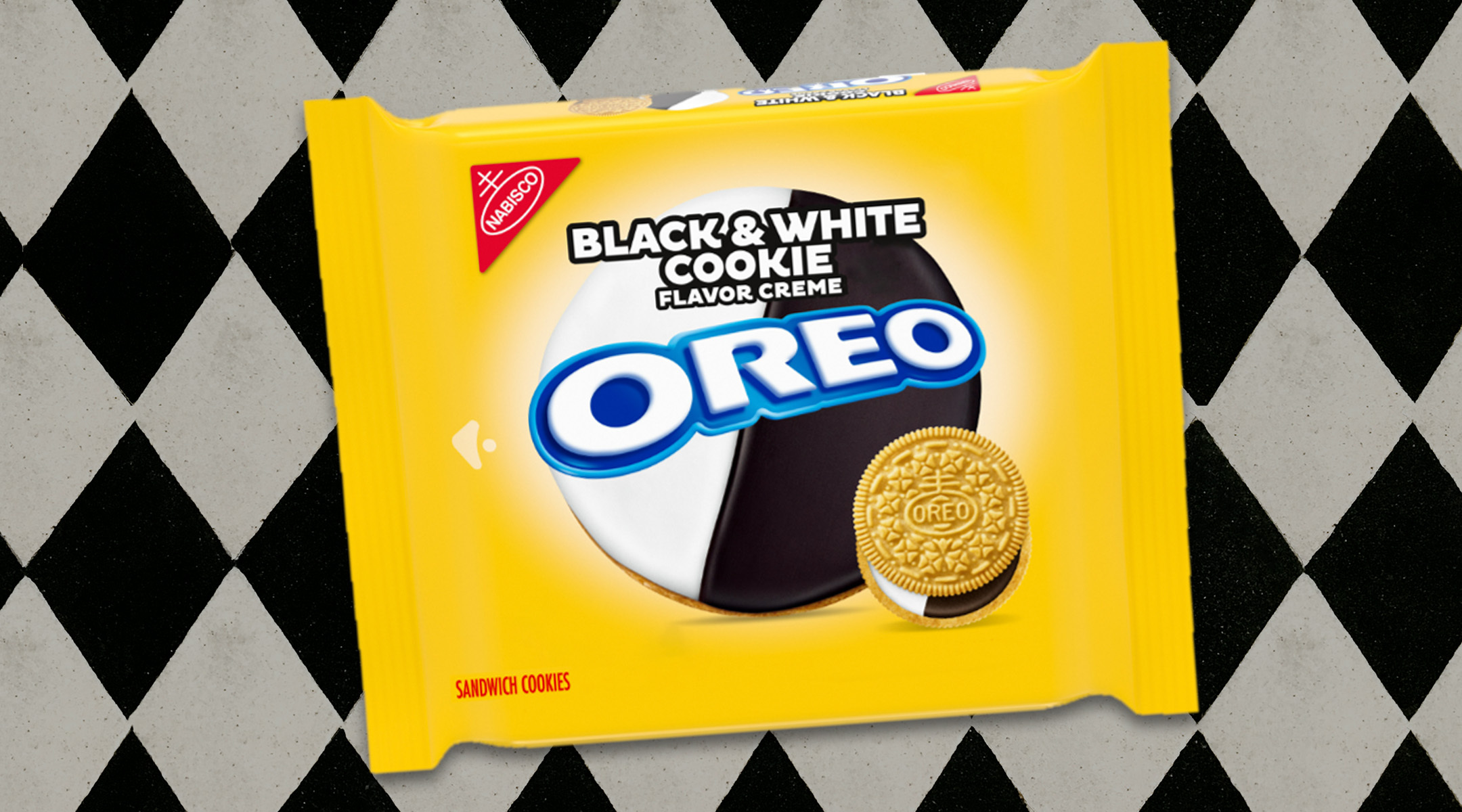(New York Jewish Week) — Some happy news for fans of Jewish desserts: Classic cookie company Oreo has unveiled three new flavors for the new year, and among them is a tribute to black and white cookies, a Jewish New York staple.
The limited-edition Oreo Black & White Cookies, which will be available starting Jan. 4, features Golden Oreo cookies with a creme filling that’s half chocolate and half vanilla-flavored.
Now, you may be asking yourself: Aren’t regular Oreo cookies already black and white? And yes, yes, they are. But this particular limited-time treat honors the half-moon appearance of the OG black and white cookies, with the chocolate and vanilla filling split right down the middle. (Plus, as an astute colleague pointed out: True New York black and white cookies are made with a thick, yellow cake-like cookie base, therefore more similar to a Golden Oreo than a regular.)
Traditional black and white cookies, which are widely available at New York City delis, bagel shops and bakeries, are commonly considered to be a Jewish dessert. “Seinfeld” once dedicated an episode, “The Dinner Party,” to singing their praises.
“You see, Elaine, the key to eating a black and white cookie is that you wanna get some black and some white in each bite,” Jerry says. “Nothing mixes better than vanilla and chocolate. And yet still somehow racial harmony eludes us. If people would only look to the cookie, all our problems would be solved.”
The history of black and white cookies is a complicated one, but the treats as we know them are said to have been popularized by Glaser’s Bake Shop on the Upper East Side, which was founded in 1902 by John Herbert Glaser. Glaser reportedly brought the black and white recipe with him when he immigrated to the United States from Germany.
In recent years, Jewish bakers have riffed on the cookies’ theme, creating “black and whites” that are actually yellow and blue to support Ukraine, red to celebrate Valentine’s Day, or blue and white to honor Israel.
“We’ve been making the black and white cookie for 95 years,” Brian Zaro told the New York Jewish Week last year, when his family-owned Zaro’s bakery unveiled a host of new flavors such as carrot cake and cookies-and-cream (in other words, yes: an Oreo-flavored black and white cookie). “My brother, Scott, had a vision to make an iconic item that meets innovation.”
In a similar vein, in the never-ending quest for new customers, many national snack brands have innovated, too, unveiling unique, Jewish-inspired flavors. Most recently, Pringles released an everything bagel-flavored potato chip, while back in 2015 Lay’s produced a much-loved limited-edition New York Reuben flavor.
Though Oreos may be one of the most popular cookies in the United States today — generating more than $675 million in revenue each year — the creme-filled chocolate sandwich cookies are actually a copycat of Hydrox cookies, which were first released in 1908, four years before Oreos appeared on grocery store shelves.
Oreo quickly emerged a favorite among American consumers, but for decades Hydrox kept at least one market cornered: observant Jews. That’s because, as JTA’s Ben Sales wrote in 2018, “until a glorious day in 1998, Hydrox was the premier kosher sandwich cookie on the market, while Oreos remained ‘treif,’ lacking a kosher heksher, or seal of approval.” Since 1997, the Orthodox Union has certified Oreos as kosher, with 43 varieties currently making its list.
The other new, permanent flavors that Oreo is unveiling in January are Gluten-Free Golden Oreos and Oreo Peanut Butter Cakesters, a “soft-baked snack” with peanut butter-flavored filling, as per a press release. Perhaps we Jewish cookie-lovers can hope for kichel-, biscochos– or hamantashen-inspired Oreos in 2025.
The New York Jewish Week brings you the stories behind the headlines, keeping you connected to Jewish life in New York. Help sustain the reporting you trust by donating today.





